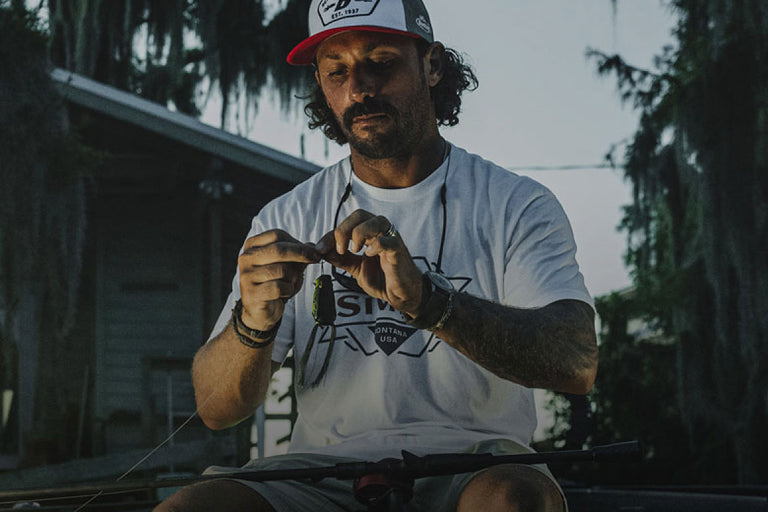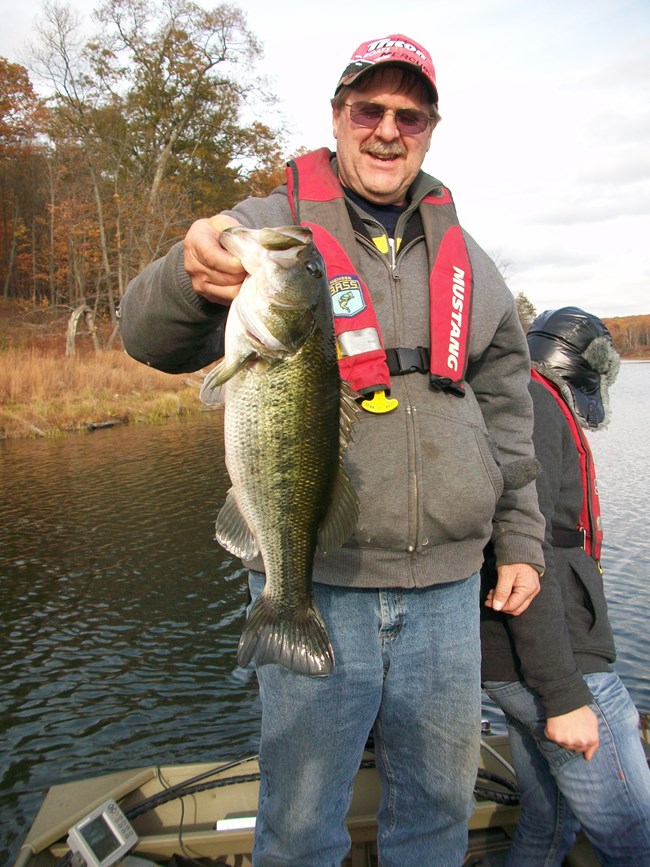Helpful Tips on How to Land a Fish: Expert Angling Advice
Landing a fish is an essential skill for any angler. It requires patience and technique.
Fishing can be a relaxing and rewarding activity. But the true challenge lies in successfully landing that fish once it’s on your line. The process can be tricky and sometimes frustrating. Whether you are a beginner or a seasoned fisherman, knowing the right tips can make all the difference.
Proper techniques not only increase your chances of a successful catch but also ensure the fish’s safety and your enjoyment. In this guide, we will share some helpful tips on how to land a fish effectively. These tips will help you improve your skills and make your fishing experience more enjoyable. Let’s dive in!
Choosing The Right Gear
Choosing the right gear is crucial for a successful fishing trip. The gear you use can make the difference between catching a fish or going home empty-handed. This section will guide you through picking the best rods, reels, and fishing lines.
Rods And Reels
The rod and reel are the backbone of your fishing gear. Start with a rod that suits your fishing style. For beginners, a medium-action rod is versatile. It can handle different types of fish. Pair it with a spinning reel. Spinning reels are user-friendly and good for beginners. They allow for long casts and smooth line retrieval.
Experienced anglers might choose baitcasting reels. These offer more control and accuracy. They are ideal for targeting larger fish. Match the rod and reel to your target fish species. A balanced setup improves your chances of landing a fish.
Fishing Line
The fishing line connects you to the fish. Choosing the right line is important. Monofilament lines are popular. They stretch and absorb shock well. This makes them forgiving for beginners. They are also affordable and versatile.
Braided lines are another option. They are strong and have little stretch. This makes them good for fishing in heavy cover. They are visible in the water, so use a leader to reduce visibility.
Fluorocarbon lines are nearly invisible underwater. They are perfect for clear water fishing. They are also durable and abrasion-resistant. Each type of line has its strengths. Choose based on your fishing conditions and target fish.
Selecting Baits And Lures
Choosing the right bait or lure can make a significant difference in your fishing experience. Understanding the type of bait and lure to use is crucial for success. In this section, we will discuss the benefits of natural baits and artificial lures for landing your catch.
Natural Baits
Natural baits are often the preferred choice for many anglers. They mimic the fish’s natural food sources, making them highly effective. Here are some popular options:
- Worms: Earthworms and nightcrawlers are excellent for freshwater fishing. Fish find them irresistible.
- Minnows: Small fish that attract larger predator fish. Ideal for both freshwater and saltwater fishing.
- Insects: Grasshoppers, crickets, and beetles are great for surface fishing. Perfect for trout and panfish.
- Cut Bait: Pieces of fish or squid work well for large saltwater species. These baits release strong scents.
Using natural baits can be messy, but their effectiveness cannot be denied. They are especially useful in slow-moving or still waters.
Artificial Lures
Artificial lures offer a different approach to fishing. They are designed to mimic the appearance and movement of fish prey. The following are some common types:
| Type | Description |
|---|---|
| Spinners | Metal lures with a spinning blade. They create vibrations in the water. |
| Crankbaits | Hard-bodied lures that mimic swimming fish. Great for covering large areas quickly. |
| Soft Plastics | Flexible lures that resemble worms or grubs. Effective in both fresh and saltwater. |
| Jigs | Weighted lures with a hook. Ideal for bottom-dwelling fish. |
Artificial lures provide a cleaner and more convenient fishing experience. They are reusable and come in various designs to attract different fish species.
Choosing between natural baits and artificial lures depends on the fishing conditions and target species. Both options have their unique advantages and can increase your chances of landing a fish.
Finding The Perfect Spot
Landing a fish requires more than just skill and patience. Finding the perfect spot is crucial. The right location can increase your chances of a successful catch. Understanding where to fish is essential. Let’s explore some helpful tips for finding the perfect spot.
Freshwater Locations
Freshwater fishing offers many options. Lakes, rivers, and ponds are common spots. Each location has its own advantages. Here are some tips for finding the best freshwater fishing spots:
- Lakes: Look for areas with vegetation. Fish tend to hide in these spots.
- Rivers: Focus on bends in the river. Fish often gather in these areas.
- Ponds: Check for structures like fallen trees. Fish use these for shelter.
Consider the time of day. Early morning and late evening are prime times. Fish are more active during these periods. Also, pay attention to the weather. Overcast days can be excellent for fishing.
Saltwater Locations
Saltwater fishing offers a different experience. Oceans, bays, and estuaries provide diverse opportunities. Finding the right spot is key. Here are some tips for saltwater fishing locations:
- Oceans: Look for reefs and wrecks. These structures attract fish.
- Bays: Fish near inlets and channels. These areas have strong currents.
- Estuaries: Target areas where fresh and saltwater mix. Fish thrive in these environments.
Tides play a significant role in saltwater fishing. Fish move with the tide. Plan your fishing trips according to the tide schedule. High tide and low tide can both be productive times.
Remember, local knowledge is invaluable. Talk to local anglers and bait shops. They can provide insights into the best fishing spots. With these tips, you’ll be well on your way to landing that big catch.
Casting Techniques
Mastering the right casting techniques is key to landing a fish successfully. Whether you are a beginner or an experienced angler, choosing the correct cast can make all the difference. Let’s explore two primary casting techniques: Overhead Cast and Sidearm Cast.
Overhead Cast
The overhead cast is the most common technique for beginners. Start by holding the rod at a 45-degree angle. Ensure your thumb is on top of the rod handle. Pull the rod back to a 2 o’clock position. Then, smoothly flick the rod forward to the 10 o’clock position. Release the line as you flick. Practice makes this technique easier.
Sidearm Cast
The sidearm cast is useful in windy conditions or when casting under obstacles. Begin with the rod parallel to the water. Swing the rod back while keeping it low. Then, quickly bring the rod forward, releasing the line at the right moment. This technique helps in achieving longer casts.
Reeling In Your Catch
Reeling in your catch is an exciting part of fishing. It requires skill and patience. This section will provide valuable tips to help you succeed. Let’s dive into the techniques for setting the hook and effective reeling methods.
Setting The Hook
Setting the hook is crucial for a successful catch. Here are some steps to follow:
- Feel the bite: Pay attention to any tug or pull on your line.
- React quickly: Lift your rod tip sharply to set the hook.
- Maintain tension: Keep the line tight to prevent the fish from escaping.
Using the right technique will ensure you hook the fish firmly. This prevents it from slipping away.
Reeling Methods
Reeling methods vary depending on the type of fish and fishing conditions. Here are some common techniques:
- Steady reeling: Keep a constant speed to keep the fish on the line.
- Pumping and reeling: Lift the rod and reel in as you lower it.
- Stop-and-go: Reel in short bursts to mimic the movement of prey.
Choose the method that suits your fishing style and the fish you are targeting.
| Reeling Method | Best For |
|---|---|
| Steady reeling | Smaller fish, calm waters |
| Pumping and reeling | Larger fish, deeper waters |
| Stop-and-go | Predatory fish, varied conditions |
Remember, practice makes perfect. Try different methods to see what works best for you.

Credit: www.reddit.com
Handling And Releasing Fish
Landing a fish is exciting. But, it’s crucial to handle and release the fish properly. This ensures the fish’s survival and helps maintain healthy fish populations. Here are some tips on proper handling and safe release.
Proper Handling
Proper handling is key to the fish’s survival. Here are steps to follow:
- Wet your hands: Before touching the fish, wet your hands. This protects the fish’s slime coat which helps to prevent infections.
- Use a rubber net: A rubber net is gentle on the fish’s skin and scales.
- Handle the fish gently: Avoid squeezing the fish. Hold it firmly but gently.
Safe Release
Releasing the fish safely is as important as handling it. Follow these steps for a safe release:
- Remove the hook carefully: Use pliers or a hook remover. Be gentle to avoid injuring the fish.
- Revive the fish: Hold the fish in the water, allowing it to breathe. Move it back and forth gently until it swims away on its own.
- Release the fish quickly: The less time the fish spends out of water, the better its chance of survival.
Fishing Safety Tips
Fishing can be a fun and relaxing activity. But it is important to stay safe. Follow these simple tips to ensure a safe fishing trip. These tips will help you avoid accidents and enjoy your time outdoors.
Weather Considerations
Always check the weather forecast before you go fishing. Avoid fishing during storms or strong winds. Wear appropriate clothing to stay comfortable. Bring a hat and sunscreen to protect from the sun. If the weather looks bad, stay home.
First Aid Essentials
Carry a basic first aid kit with you. Include bandages, antiseptic wipes, and tweezers. Know how to use them in case of an injury. Learn simple first aid techniques. This knowledge could help in an emergency. Stay calm and act quickly if someone gets hurt.

Credit: www.youtube.com
Common Mistakes To Avoid
Landing a fish successfully can be tricky. Many anglers make avoidable mistakes. These errors can lead to lost catches and frustration. Knowing these common mistakes can help you improve your fishing skills.
Using Wrong Gear
Using the wrong gear is a frequent mistake. The type of fish determines the gear you need. For example, using a light rod for a big fish can cause it to break. Always research the fish species before choosing your gear. Make sure to use the correct rod, reel, and line.
Also, consider the water conditions. Saltwater and freshwater fishing need different gear. Using the wrong type can harm your equipment. It can also decrease your chances of catching fish.
Ignoring Local Regulations
Ignoring local regulations is another common mistake. Each area has specific fishing rules. These rules protect fish populations and the environment. Not following them can lead to fines or penalties.
Always check the local regulations before you start fishing. This includes knowing the fishing seasons and catch limits. Being informed shows respect for the law and nature.

Credit: m.youtube.com
Frequently Asked Questions
How Do You Properly Set The Hook?
To properly set the hook, wait until you feel a tug. Then, quickly pull the rod upward. This ensures the hook embeds in the fish’s mouth.
What Is The Best Bait For Fishing?
The best bait varies by fish species. Worms, minnows, and artificial lures are popular choices. Research the preferred bait for your target fish.
How Do You Reel In A Big Fish?
To reel in a big fish, keep the line tight. Use smooth, steady motions while reeling. Avoid jerking the rod to prevent the line from breaking.
What Gear Do I Need For Fishing?
Basic fishing gear includes a rod, reel, line, hooks, and bait. Additional items like a tackle box, pliers, and a net can be helpful.
Conclusion
Landing a fish can be simple with the right tips. Practice patience and keep calm. Always use the proper gear for the type of fish. Focus on technique rather than speed. Remember, each catch offers a learning experience. Stay observant and enjoy the process.
With time, you’ll improve your skills. Fishing is not just about catching fish; it’s about enjoying nature. So, follow these tips and make your fishing trips successful and fun. Happy fishing!






